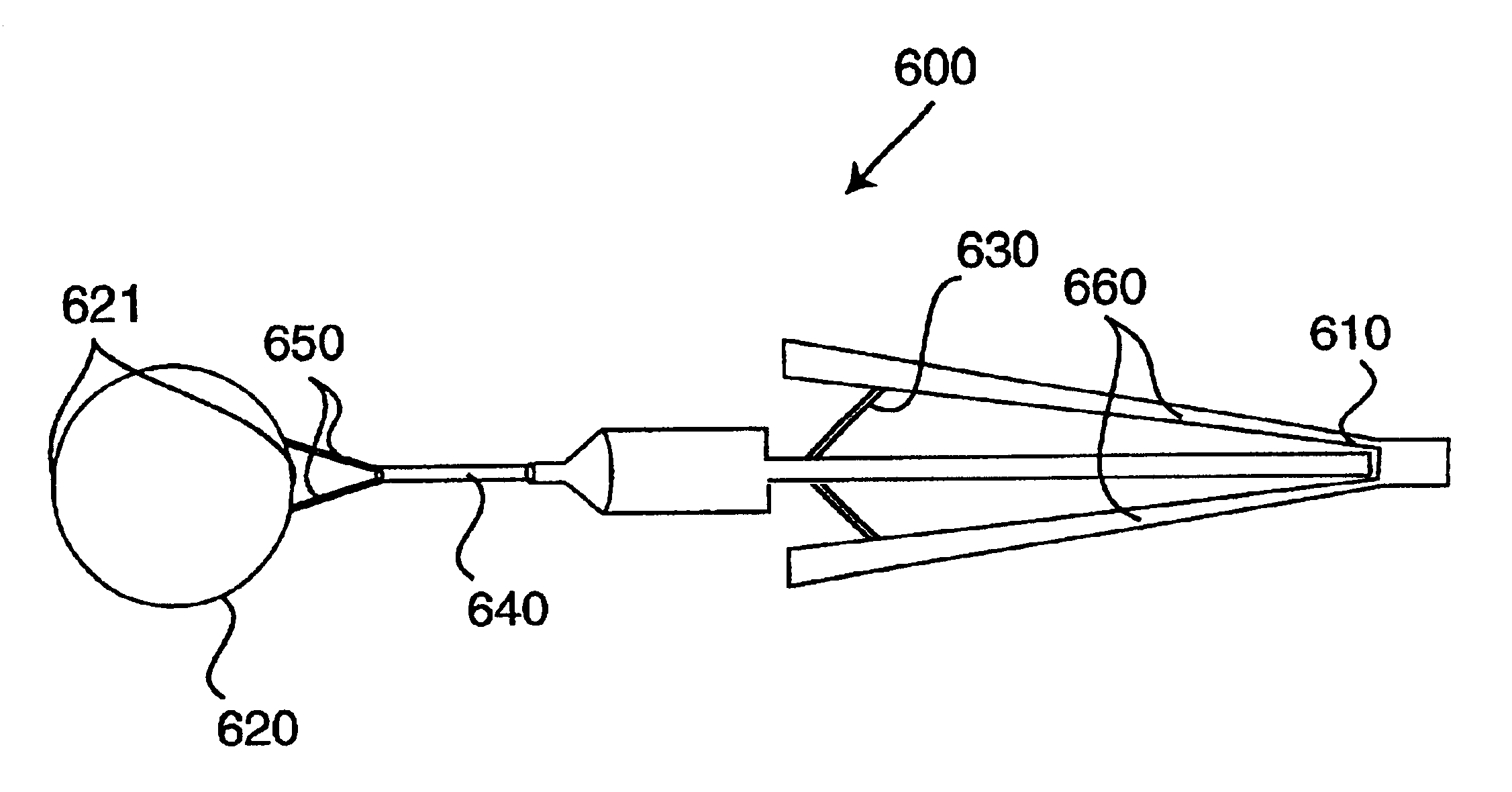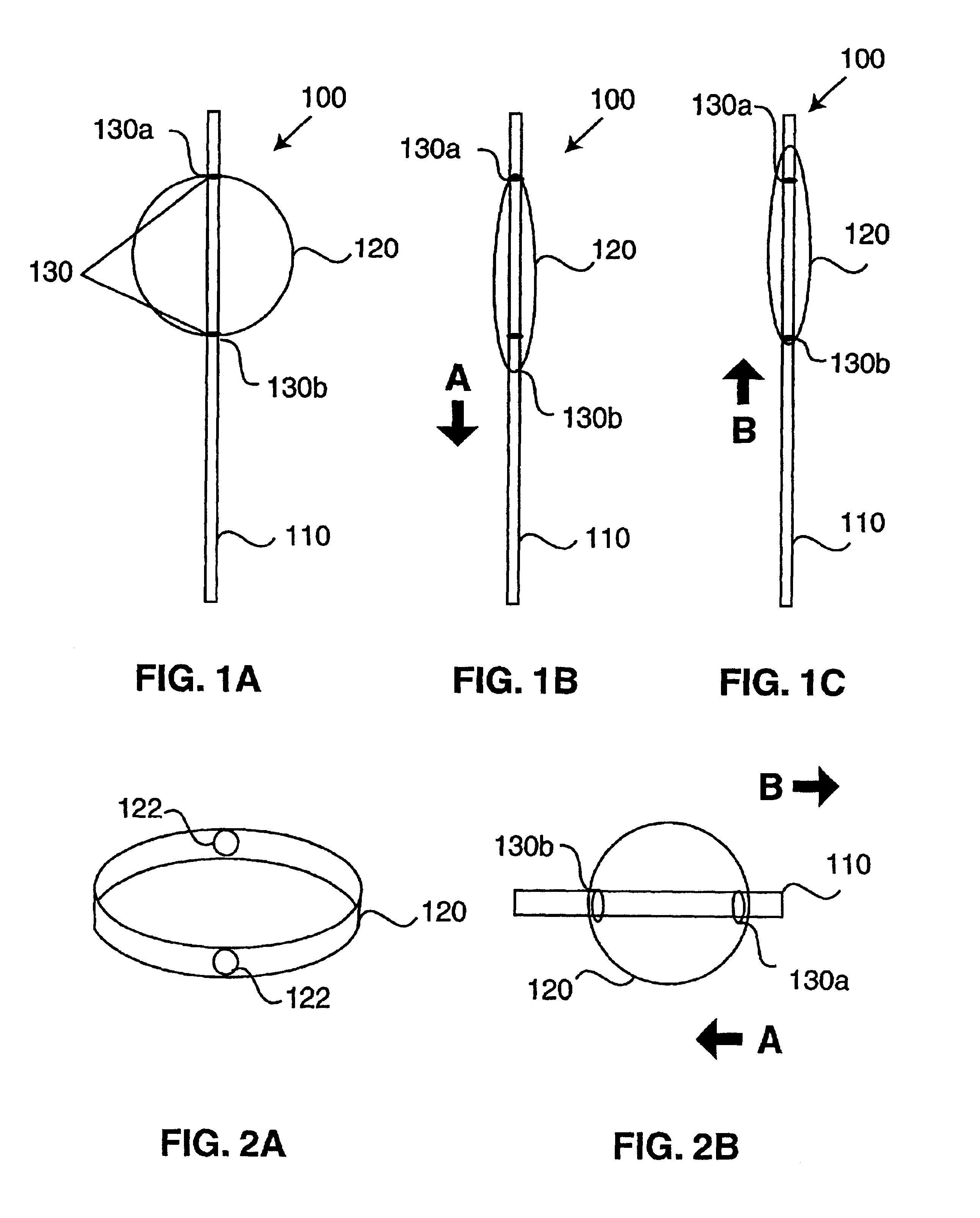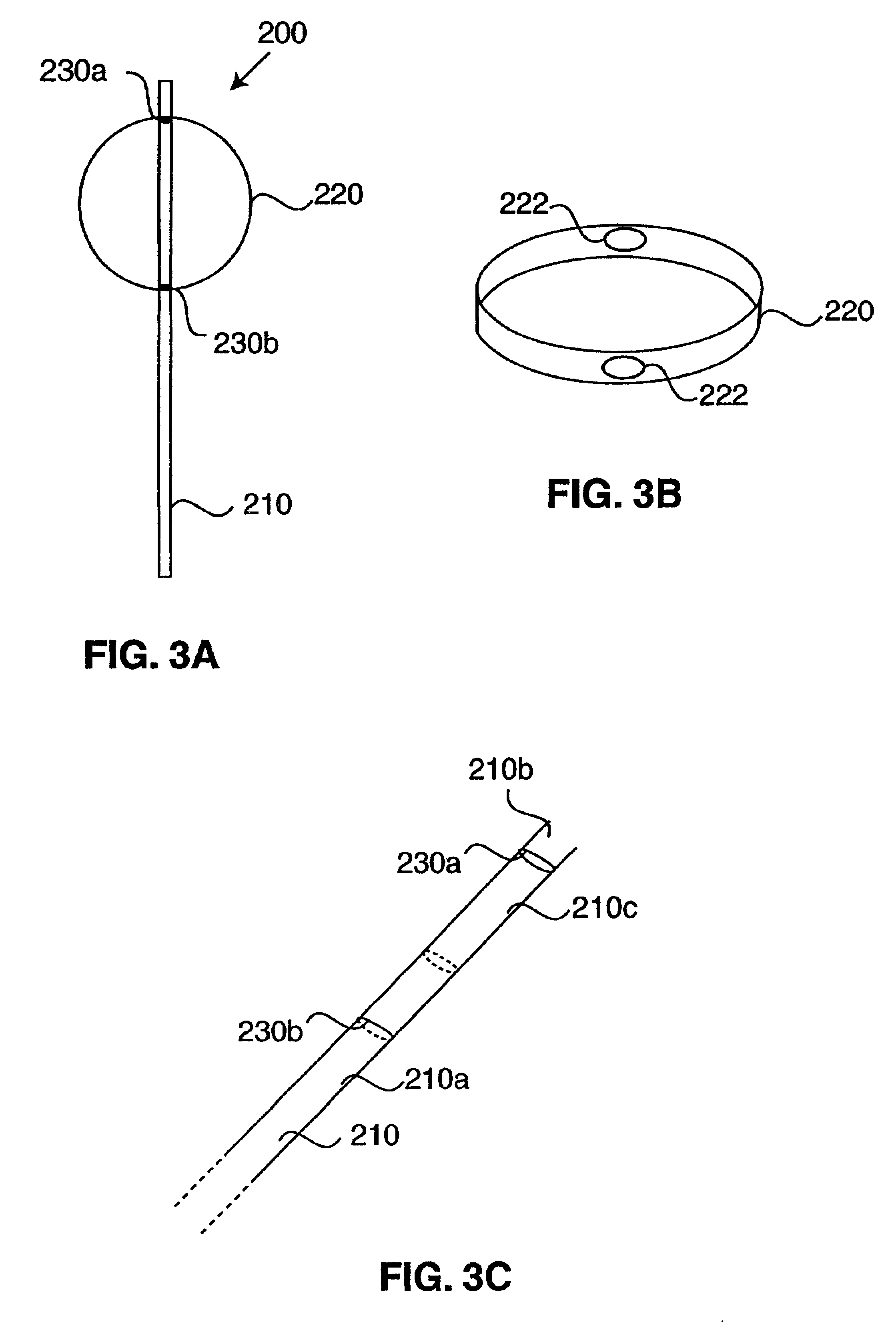Incising apparatus for use in cataract surgery
a technology for cataract surgery and cutting equipment, which is applied in the field of ophthalmology, can solve the problems of reducing the clarity of a patient's vision, prolonging the tedious process, and inadvertent leakage of viscoelastic material from the larger corneal incision, etc., and achieves the effects of simple, convenient and fast operation, and convenient manufacturing
- Summary
- Abstract
- Description
- Claims
- Application Information
AI Technical Summary
Benefits of technology
Problems solved by technology
Method used
Image
Examples
first embodiment
[0030]Referring first to FIGS. 1-2A, an incising apparatus 100 constructed in accordance with the invention is shown. As is first depicted in FIG. 1, incising apparatus 100 comprises a handle portion 110, a circular cutting band 120, and a pair of stoppers 130 (130a, 130b) positioned along handle 110, along the interior circumference of circular cutting band 120, and positioned so that circular cutting band 120 is maintained in its circular shape. Circular cutting band 120 is slidably attached to handle 110 so that, as noted above, stoppers 130 are positioned inside the circular cutting band. Therefore, as shown in FIG. 1A, the top portion of the circular cutting band in the vicinity of stopper 130a can move in a direction up in FIG. 1A, but is restricted from moving down along handle 110 by stopper 130a. Similarly, the bottom portion of circular cutting band 120 in the vicinity of stopper 130B is able to slide along handle 110 in a downward position in FIG. 1A, but is restricted in...
second embodiment
[0036]Referring next to FIGS. 3A-3C, an incising apparatus constructed in accordance with the invention will now be described.
[0037]As is shown in FIG. 3A an incising apparatus 200 constructed in accordance with the second embodiment includes a handle 210, a circular band 220, and integral cylindrical stopping faces 230a and 230b. While integral cylindrical stopper faces 230a and 230b function similarly to stoppers 130a and 130b of FIG. 1A, these stopper faces are formed integral with handle 210. Therefore, as is shown in FIG. 3C, integral cylindrical stopper faces 230a and 230b form a transition from a flat compressed portion of handle (compressed portion 210a and 210b of handle 210) and a cylindrical portion 210c of handle 210. Because as is shown in FIG. 3B, circular band 220 is formed with oval holes 222, these oval holes are structured so as to slide freely along flattened portions 210a and 210b of handle 210, but to be restricted in their movement upon contact with integral st...
third embodiment
[0044]Referring next to FIGS. 6 and 7, an incising apparatus constructed in accordance with the invention is shown.
[0045]As is shown in FIG. 6, an incising apparatus 600 includes a gripping handle 610 having pressure members 660, and biasing members 630. FIG. 6 shows handle 610 in an open position. Also included is a tubular component 640, and two arms 650 protruding from a distal end thereof. A circular cutting ring 620 is attached to the two arms, which as shown in 600 are open in their natural state, but which may be compressed together like forceps by the compression of pressure members 660. Circular cutting band 620 is provided with creases 621 at the 6 and 12 o'clock positions as shown in the prior embodiments. Upon compression of pressure members 660 against the force of biasing members 630, the structure of incising apparatus 600 changes to that shown in FIG. 7. As is shown in FIG. 7, elements 660 have been compressed against the biasing force of bias springs 630 through an ...
PUM
 Login to View More
Login to View More Abstract
Description
Claims
Application Information
 Login to View More
Login to View More - R&D
- Intellectual Property
- Life Sciences
- Materials
- Tech Scout
- Unparalleled Data Quality
- Higher Quality Content
- 60% Fewer Hallucinations
Browse by: Latest US Patents, China's latest patents, Technical Efficacy Thesaurus, Application Domain, Technology Topic, Popular Technical Reports.
© 2025 PatSnap. All rights reserved.Legal|Privacy policy|Modern Slavery Act Transparency Statement|Sitemap|About US| Contact US: help@patsnap.com



